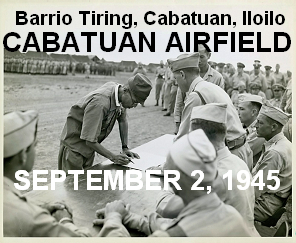
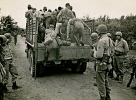

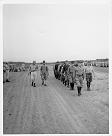


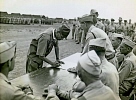
Col. Ryoichi Tozuka signs the surrender instrument
as Col. Raymond G. Stanton looks on.
Cabatuan Airfield
Barrio Tiring, Cabatuan, Iloilo
Panay Island, Philippines, September 2, 1945
|
|
- o -
|
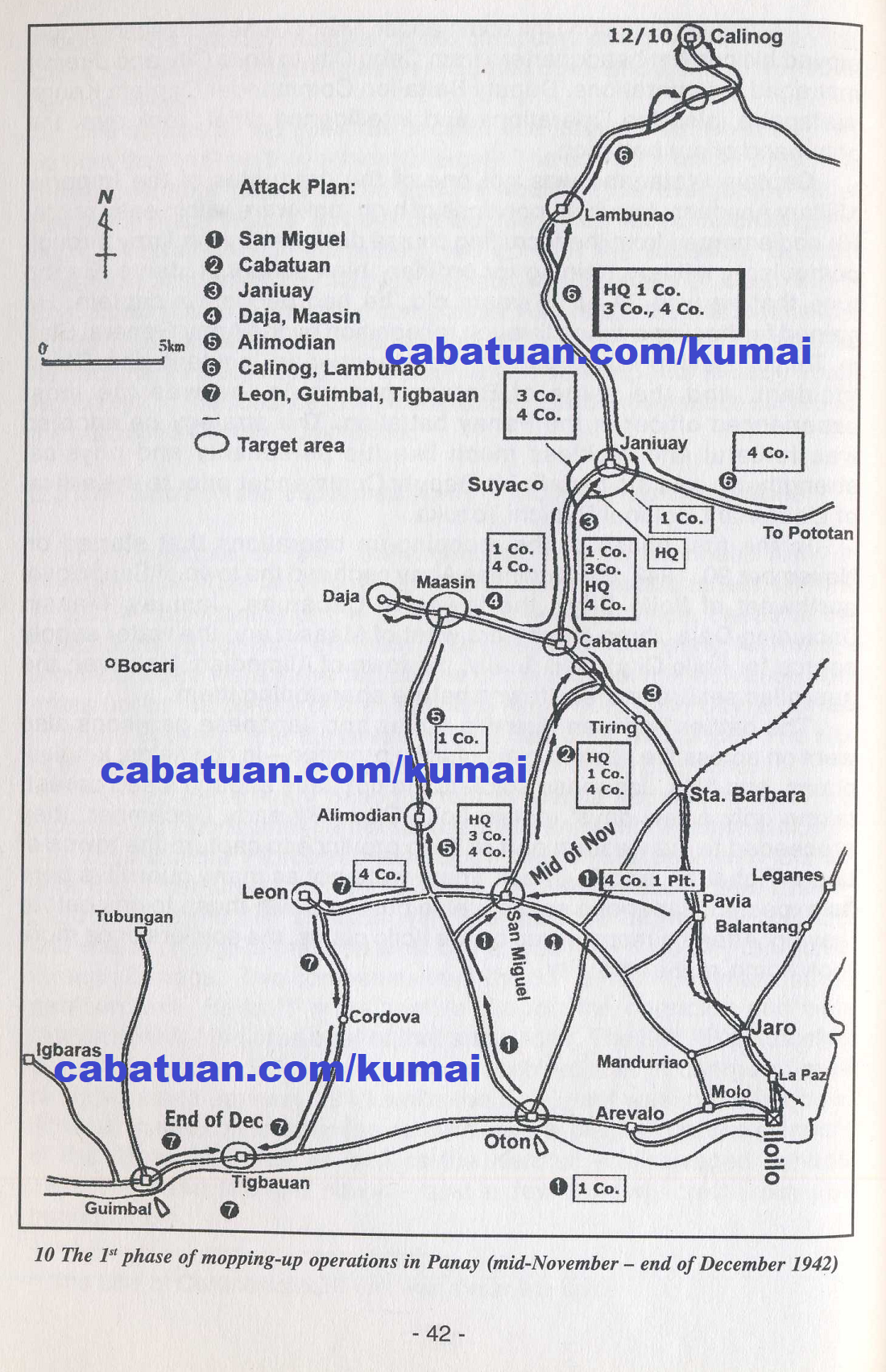
The 1st Phase of mopping-up operations in Panay (mid-November - end of December 1942). Page 42.
|
|
CHAPTER 3 – MOPPING-UP
3.1 Mopping-up of the Guerrilla Bases
Early in December 1942, the new battalion commander Lieutenant Colonel Ryoichi Tozuka arrived at his new post. He had served as a battalion commander in the war in China and as an Independent Garrison commander in Manchuria.
Just before this time, battalion commander Lieutenant Colonel Senô who was assigned to the Antique province garrison left Panay. He was demoted and attached to the Sakhalin Regiment headquarters north of Japan where it was severely cold. He had apparenlly earned disapproval from Manila headquarters due to his August 1942 report that said, “Peace and order in Panay is quite good.”
By then, the organization of the guerrilla forces had become clear to the Japanese officers of the Panay garrison through interrogations of captured guerrillas. Lieutenant Colonel Peralta formed and commanded the IV Philippine Corps, the cadre units of which were the 61st Division in Panay, the 72nd Division in Negros and the 83rd Division in Cebu. The Panay guerrilla force had become the core of guerrilla warfare in the entire Visayas and by mid-December, Peralta had earned the rank of colonel. The commander of 61st Division in Panay was Lieutenant Colonel Leopoldo Relunia, and the Chief of the Staff and concurrent Commander of the 63rd Infantry Regiment was Lieutenant Colonel Julian Chaves. Their Division headquarters was located about 20 kilometers west of the town Of Calinog, near Mt. Dila-Dila and Mt. Baloy, close to the center of the mountain range that runs from north to south of western Panay.
On December 18, 1942, the headquarters of General Douglas MacArthur officially approved the organization of the IV Philippine Corps. However, it became difficult for the guerrillas to function properly as military forces and carry out military operations due to the mopping-up operations (sôtô) and punitive expeditions (tôbatsu) of the reinforced Japanese Army. Moreover, there are dissensions among them on different islands. On February 13, 1943, MacArthur dissolved the IV Philippine Corps in favor of the prewar military organization. Hence, the guerrilla forces of Panay became the 6th Military District, headed by Colonel Macario Peralta.
In early January 1943, the second phase of the mopping-up operations (kantei sakusen) began. The target area around Mt. Dila-Dila and Mt. Baloy where the main position of the guerrillas. The intention was to carry out a surprise attack on the position and capture of Division Relunia as well as Lieutenant Colonel Chaves, the Chief of Staff and Cornmander of the 63rd Infantry Regiment.
Eventhough the main forces had tanks deployed in the area, the results were not great. The troops only captured a guerrilla NCO and the mother of Lieutenant Colonel Chavez. Since the letter was an elderly woman, a carriage drawn by a carabao (water buffalo), i.e., carroza, was used to take her to Calinog. Later, she was placed under the charge of Governor Caram, discouraged, the 2nd company of the Kinoshita unit of the 171st IIB was left at the Calinog garrison while the trucks headed back to Iloilo City.
As the column of trucks moved toward the town of Lambunao, there was a huge explosion at the end of the line about two kilometers north of Januiay. As the troops gathered around, they saw that half of the road had turned into a hole that was three to four meters deep. They realized that a whole truck had exploded and more 10 soldiers on board had been blown into unrecognizable remains. The mopping-up operations ended with this major catastrophe and fear cased by a guerrilla landmine.
At this time, I was on garrison duty at Janiuay, I was accountable for the Suage River Bridge about 300 meters away from the garrison at the town center. On the adjacent plateau was a mango grove that was a favorite guerrilla ambush point. Due to the Japanese mopping-up operations, the guerrillas had scattered and avoided full-scale confrontations. However, villages and hamlets that were far from the main road remain under guerrilla control. They attempted attacks whenever they notice weaknesses in the Japanese defenses. When we took over the Janiuay garrison, there was a guerrilla fighting force north of the Suage River. Since the main Japanese troops were in combat near Mt. Dila-Dila and Mt. Baloy. I presumed that the routed enemies must have gathered this area.
Once I was scouting with a dozen soldiers. Around a kilometer north of the river, we came upon a wide basin, about 400 meters wide both east-to-west ans north-to-south. At the center is a road surrounded by forest, I sensed danger in this setting. Lance Corporal Taniyama and a few soldiers from the radio section were walking about 70 meters ahead. I was about to warn them when a young woman appeared by the banana grove in front of us. She was in our direction. Taniyama and the rest of this group happily waved back. When they were about 50 meters from her, she suddenly disappeared. Instantly, there was a volley of shots from the surrounding trees. Lead shots hit Taniyama directly and killed him on the spot.
We quickly withdrew to the high ground behind us and returned fire. Thus, the shooting went on for some time over Taniyama’s corpse. I estimated that there were around 50 to 60 of the enemy. There were only twelve of us and the enemy fire was increasing. So I dispatched a messenger to send a wireless call for reinforcements from the headquarters. The shooting continued into the evening when a relief force of 30-40 men arrived led by 1st Lieutenant Yoshioka and Sergeant Kurosawa and likely caused the guerrillas to withdraw. In the dark chilly night, we found Taniyama’s beheaded body that had been thrown into a ditch. We all searched for his head with our hands but finally had to return with only his headless corpse. As we stood around the remains of Lance Corporal Taniyama, we were seething with strong feelings for retaliation.
|
|